Design Workshop: Give Me an ‘H’
Like most architects, I am a perpetual student of the floor plan. I find it fascinating to trace the roots of a particular configuration to its origins. The roots of the H-shaped plan, in the vernacular hall house of medieval Northern Europe, are especially interesting. More specifically, this layout was often called the double-ended hall house.
In these homes the hall was a large gathering space with a central hearth used for both heat and food preparation; sleeping quarters and functional storage were on the opposite ends. Wings perpendicular to either end of the hall formed the “H” and greatly increased its utility. The wings were private retreats from the public hall and its smoke and soot. These wings sometimes even functioned as entirely separate living quarters. What’s interesting is that the needs that gave rise to these design decisions still persist today. Let’s look at the benefits of an H-shaped layout.
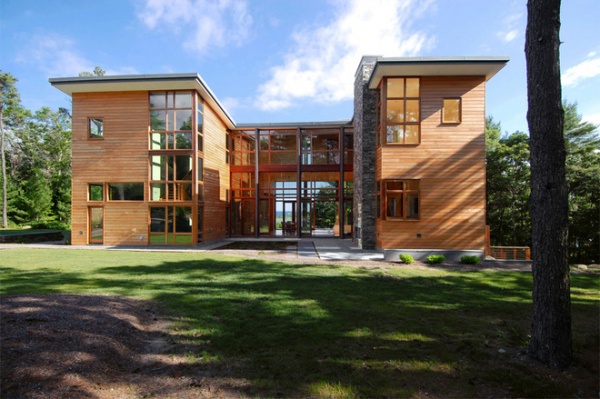
Clear Separation of Public and Private Spaces
One of the most basic design priorities of any architect, designer or homeowner is the need for separation of public and private functions in a plan. In fact it was the genesis for the medieval variant over 500 years ago. An H-shaped plan naturally accomplishes this quite well.
Private wings sit at either end of a central hall, which is seen here rendered in glass. The central hall typically is used for gathering or circulation. Here it’s used for both.
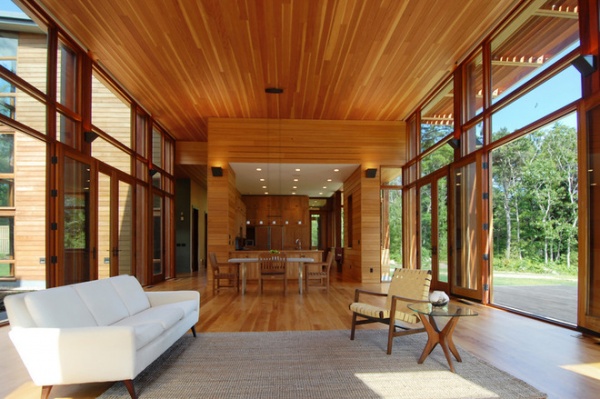
In the same house, the bottom level of the glass-walled central hall is used for gathering, and it links the public and private areas of the home.
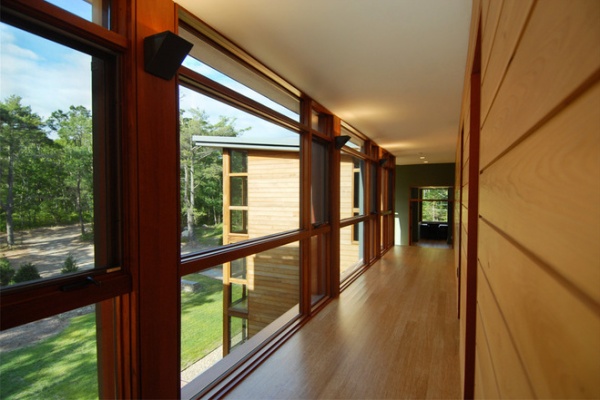
Meanwhile, the top hallway is used for circulation. The ability to have circuitous paths — across a skybridge for example — in a floor plan not only provides spatial interest, but also enhances the feeling of privacy and separation.
Both levels of the hall physically link and unite the private wings, which themselves can be layered from public to private as well, depending on their location on the site and within the home. Meanwhile, the most private spaces, the bedrooms, are on the upper levels. Even the staircase follows this layering principle; it’s positioned close to the more public outdoor courtyard, leaving the private wood views for the bedrooms.
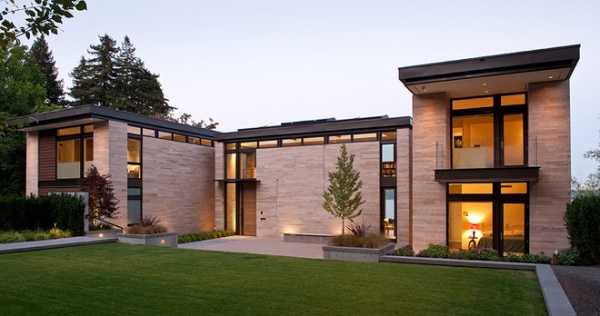
Two Courtyards
Unlike the more common U-shaped plan, the H-plan configuration creates two courtyard spaces. If the length of the legs is varied, each courtyard can have a distinct feeling and focus.
The shorter legs seen here form a street-facing courtyard. The surrounding walls are more solid and screen the living areas in the central hall from the street. In a neighborhood setting, this kind of orientation makes good design sense.
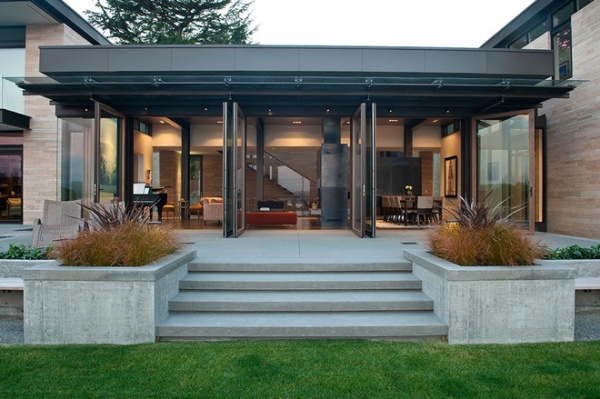
By contrast the rear courtyard is glazed, open and permeable, which is a very different feeling than the street side. It’s a result of how the walls are treated as well as the length of each leg.
Longer legs result in a more focused view toward the end of the courtyard and a stronger sense of enclosure.
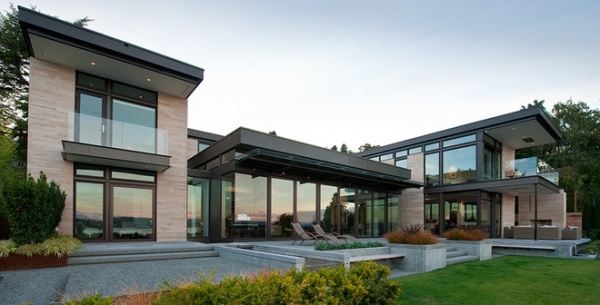
With unequal legs, the courtyard will tend to focus views away from whichever leg is longer. Having one long and one short leg creates both openness and a sense of protection. The longer flank to the right here provides screening and a backdrop, while the shorter wing opens up the view.
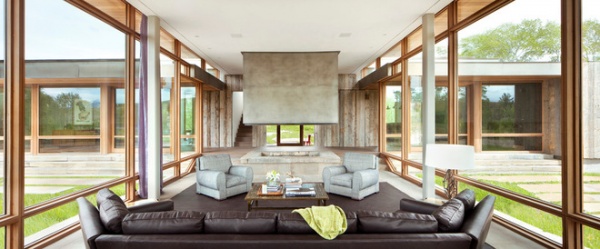
Ample Natural Light
The slender legs of the H offer the opportunity for every interior space to benefit from natural light. The wings here are essentially one room wide, allowing views and light from both sides.
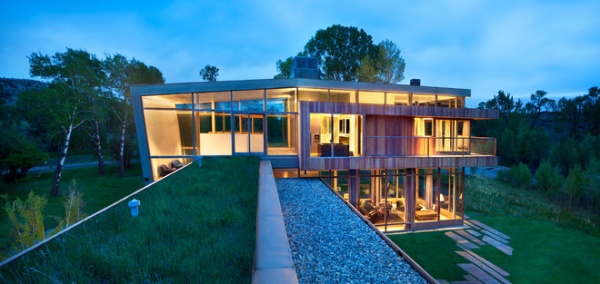
The H form can be stretched out to great lengths to allow for these single-room-wide layouts, which ensure that every space has access to daylight, and to coincide with certain existing site features or a specific solar orientation.
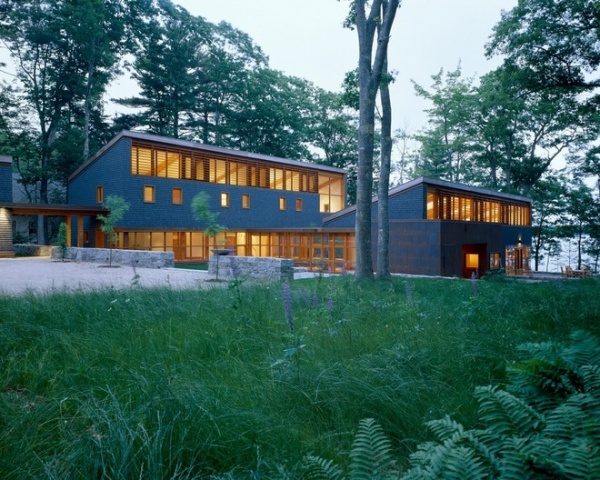
Reduced Apparent Size
When the building’s functional spaces are separated into wings, the overall impression of size can be minimized. Architects and designers use this trick frequently to make larger homes feel more approachable. This home’s 4,500-square-foot living area feels smaller because of the H plan. Sensibly dividing the spaces of the home between private and public and orienting them in an H-shaped configuration have resulted in a comfortably scaled, approachable home.
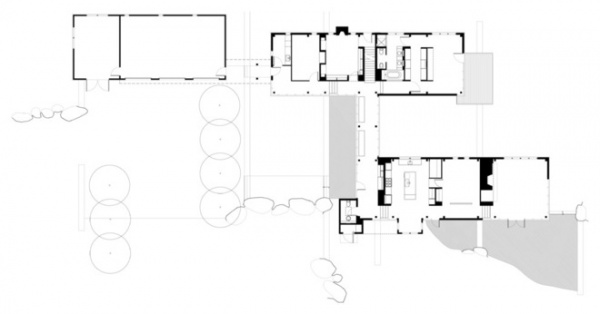
In this plan the hall has been reduced to a simple breezeway connecting the public living and private sleeping areas. The two-story private wing is situated to the north to shield views to a neighboring property, while the lower, public wing is positioned to the south to capture sunlight.
If the entire square footage had been in a single volume, the effect would have been of a much more imposing structure. Reducing the size, separating the spaces and using the breezeway to reconnect them have the added effect of refocusing the occupants on the rich, varied views of the surrounding site from the forest to the sea as they move through their daily routines.
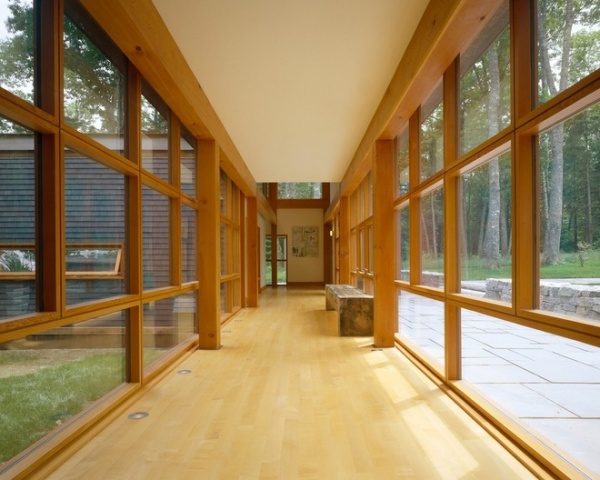
Connecting the public and private parts of the home, the smaller-scale breezeway comfortably moves the occupants between the built and natural elements. That way the large floor plan can be understood in smaller, discrete vignettes that always reference the surrounding site.
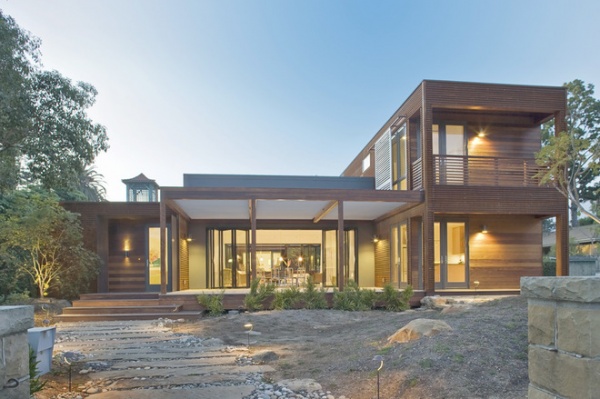
Strong Site Connections
Establishing a connection to the building site is important to every designer and architect. The geometry of the H-shaped plan and its narrow appendages that reach out into the site offer the opportunity to visually and physically connect the home to the surroundings.
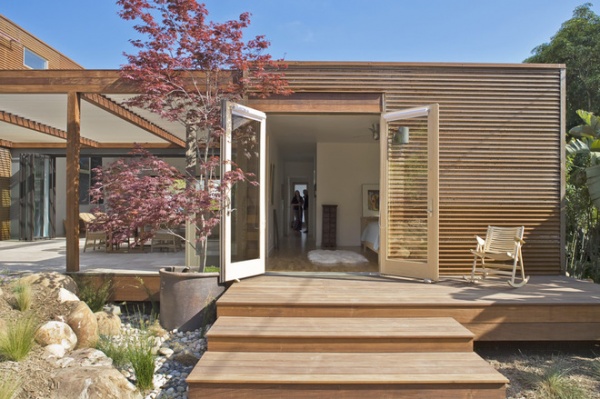
In this home prefabricated modules divide the spaces into two wings, connected by a common living space. By using the H plan to create interior courtyards, the architect has created a variety of private views on a confined downtown lot. The layout develops private-view corridors and outdoor rooms, making for a variety of interesting site connections.
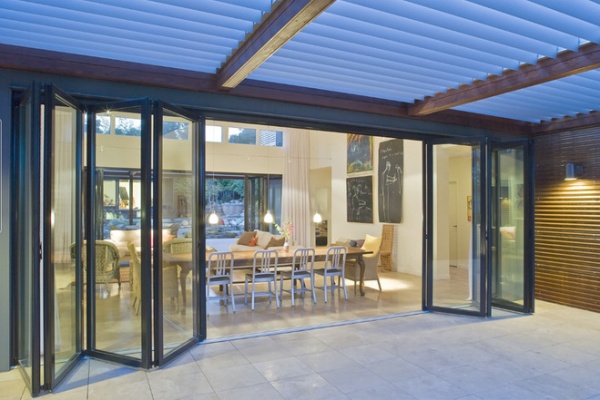
Large, glazed, operable door openings make the site connections even more apparent in this house. It’s hard to imagine a home more far removed from a 15th-century English manor house, yet all of the benefits of the latter have been conferred to this modern-day incarnation.
More: Design Workshop: The Case for Big Overhead Doors












